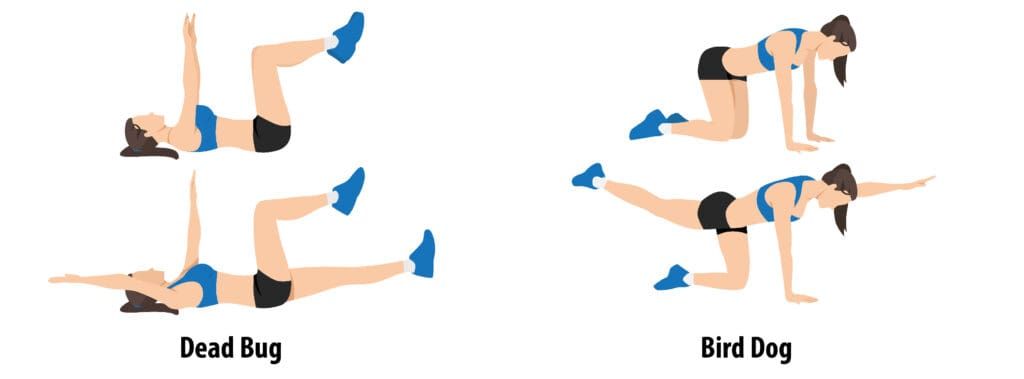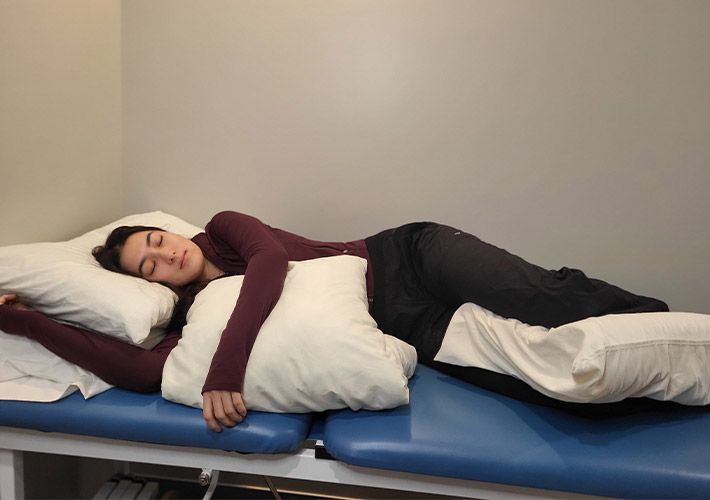Core Strength: Your Secret Weapon Against Back Pain

If your back could talk, it would probably beg you to work on your core. No, we’re not talking about crunching your way to six-pack abs (unless you’re into that). We mean strengthening the deep, stabilizing muscles that support your spine and keep you upright without creaking.
A strong core is like a built-in back brace, offering support, improving posture, and reducing the risk of those all-too-familiar aches and pains. So, let’s talk about why core strength is essential, how it helps prevent back pain, and, most importantly, what you can do to fire up those muscles without breaking a sweat—okay, maybe a little sweat.
Why Core Strength Matters (Hint: It's More Than Just Looking Good)
Your core isn’t just about your abs—it’s an entire support system that includes your deep abdominal muscles, obliques, lower back, and even your glutes. Think of it as your body’s natural weightlifting belt, holding everything in place so you can move efficiently and pain-free.
A weak core? That’s like trying to build a house on a foundation of Jell-O. It leaves you susceptible to poor posture, muscle imbalances, and—yep—chronic back pain. Research has shown that people with weak core muscles are more likely to experience lower back discomfort, while those with strong core engagement have better spinal stability and less pain.
The Core-Back Pain Connection
Let’s get one thing straight: your spine isn’t meant to do all the heavy lifting alone. It relies on the surrounding muscles for support. When your core is weak, your lower back picks up the slack, leading to strain, overuse, and the kind of discomfort that makes you rethink picking up your grocery bags in one trip (we’ve all been there).
A strong core helps by:
✔ Reducing spinal stress – The stronger your core, the less pressure your spine has to bear.
✔ Improving posture – Good core strength keeps you from slouching like a question mark at your desk.
✔ Enhancing movement efficiency – A stable core makes everyday movements—like bending, twisting, and lifting—more fluid and less injury-prone.
✔ Decreasing injury risk – Whether you're hitting the gym or just reaching for your morning coffee, a well-supported spine is less likely to rebel against you.
Core Exercises That Won’t Bore You to Tears
The good news? You don’t need fancy equipment or a gym membership to build a rock-solid core. These simple exercises can be done anywhere and are chiropractor-approved for keeping your back happy.
1. Dead Bug (No actual bugs required)
This exercise strengthens your deep core muscles while keeping your spine in a safe, neutral position.
👉 How to do it:
- Lie on your back with arms extended toward the ceiling and knees bent at 90 degrees.
- Slowly lower one arm and the opposite leg toward the floor while keeping your back flat.
- Return to the starting position and switch sides.
- Repeat for 10 reps per side.
🚀 Why it works: It promotes core stability without putting undue stress on your back.
2. Bird Dog
This one is a chiropractor favorite because it engages your entire core while improving balance and coordination.
👉 How to do it:
- Start on all fours with a neutral spine in a table top position.
- Extend one arm and the opposite leg straight out while keeping your torso stable.
- Hold for a second, then return to the starting position and switch sides.
- Repeat for 10 reps per side.
🔥 Why it works: Strengthens the core and back while reinforcing proper movement patterns.
3. Plank (Yes, We’re Going There)
Planks may not be fun, but they’re one of the best ways to build core endurance.
👉 How to do it:
- Start in a forearm plank position with elbows under shoulders and body in a straight line.
- Engage your core (imagine bracing for a punch).
- Hold for 30–60 seconds, or longer if you’re feeling ambitious.
💪 Why it works: Builds endurance in both your abs and lower back, reducing strain on the spine.
4. Glute Bridge
A weak core often means weak glutes, which can contribute to back pain. The glute bridge strengthens both.
👉 How to do it:
- Lie on your back with knees bent and feet flat on the floor.
- Press through your heels to lift your hips while squeezing your glutes.
- Hold for a second at the top, then lower slowly.
- Repeat for 12–15 reps.
🍑 Why it works: Strengthens the posterior chain (glutes, hamstrings, and lower back), improving spinal support.
A Strong Core is a Pain-Free Core
Back pain doesn’t have to be a constant companion. Strengthening your core is one of the simplest, most effective ways to support your spine and prevent discomfort. Plus, the benefits go beyond pain relief—better posture, improved movement, and a stronger, more resilient body are all part of the deal.
If back pain is already part of your daily life, chiropractic care and massage therapy can help you get back on track. A chiropractor can assess your core strength, check for muscle imbalances, and provide targeted adjustments, while massage therapy can release tension and improve mobility.
Ready to strengthen your core and say goodbye to back pain? Start with these exercises, and if you need extra support, book an appointment with our team at Peak Performance Chiropractic & Wellness in Buffalo, NY. Your back will thank you.
Bethany Wolcott
D’Youville Chiropractic ‘26












